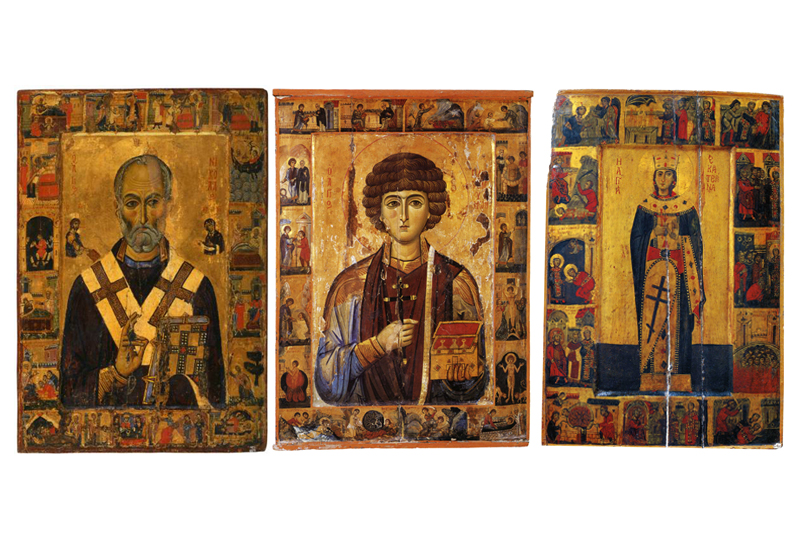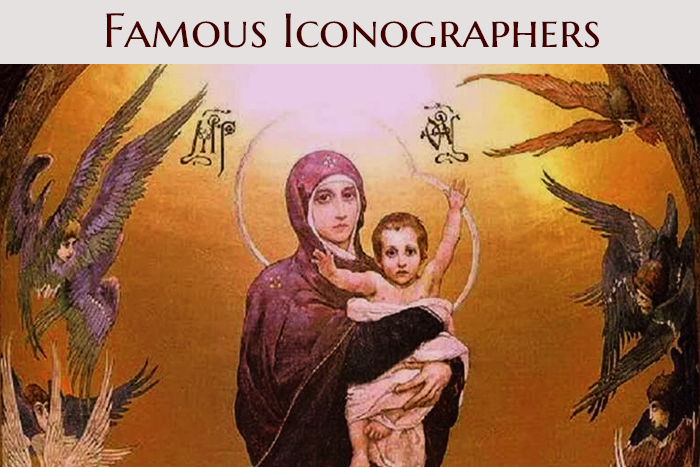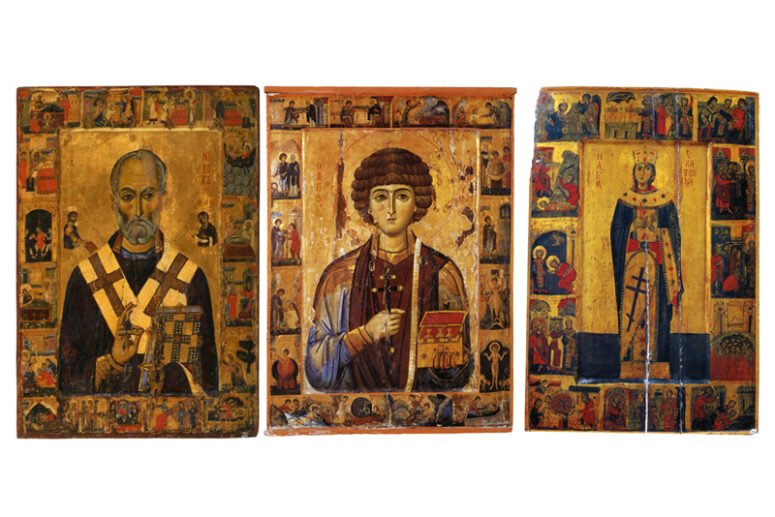
Hagiography icons depict a saint (in the centrepiece), surrounded by the so-called marginal scenes – individual compositions reflecting the life, deeds and miracles of this saint. In spite of its Byzantine origin, hagiographic iconography became so widespread in Russia that it became a prominent feature of the national culture. Our article will help you find out what the ancient hagiography icons looked like, what they were based on and how they changed over time.
It is not known for certain when the first such icon was painted. The earliest surviving icons of this type date from the 12-13th centuries.
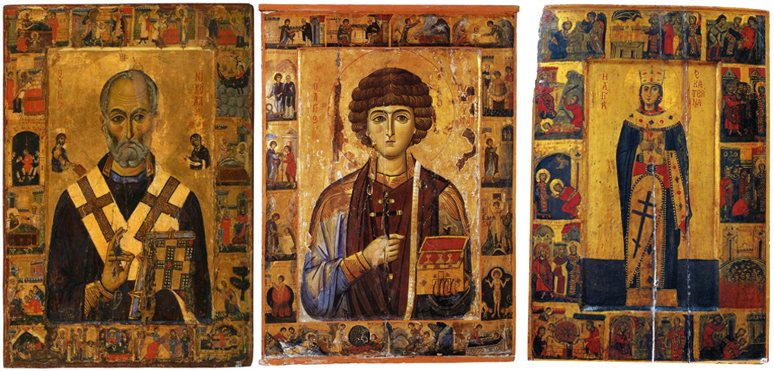
Traditionally, such compositions are read from left to right; starting with the top row, then (alternately) the side margins and finally the bottom row. This order of studying a hagiography icon can be compared with turning the pages of a book.
Undoubtedly, hagiographic icons could not exist without the lives of the saints, serving as their written basis. The level of detail in a saint’s hagiography is usually reflected in the abundance of marginal scenes on his hagiographic icon.
In the course of the 10th century reform in Byzantium and thanks to the works of St Simeon the Metaphrast, the lives of saints were for the first time organized and systematized in form and content.
From the beginning of the 12th century, the Byzantine collections of the lives of saints, called Menologies, were translated into the Slavic language and spread throughout Ancient Rus. Presumably, at the same time, the first hagiography icons began to appear here. However, the oldest surviving example dates back to the end of the 13th century.
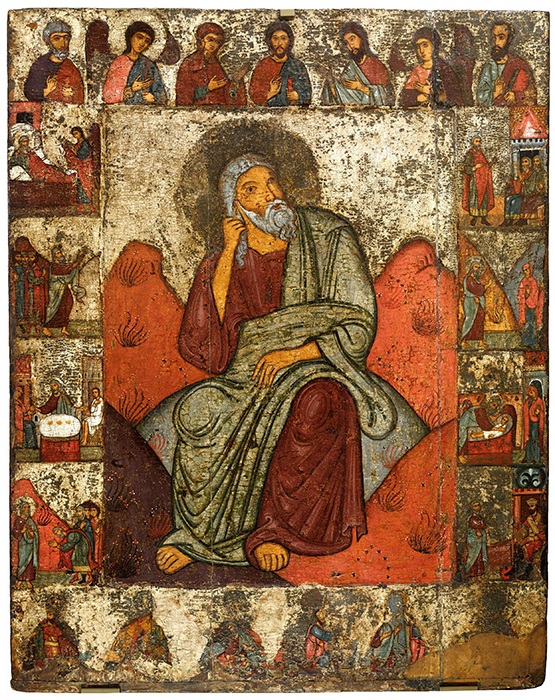
Following the Byzantine patterns, Russian icon painters were also continually working to achieve their main goal of developing the iconography of the Russian saints, whose perfectly composed hagiographies made the artisans’ work much easier. The first saints canonized in Russia (at the beginning of the 12th century) were the holy princes Boris and Gleb, as well as the Venerable Theodosius of the Caves. Since that time, the hagiographic icons of Sts Boris and Gleb became quite wide-spread, while the images of St Theodosius appeared much later and were generally rare.
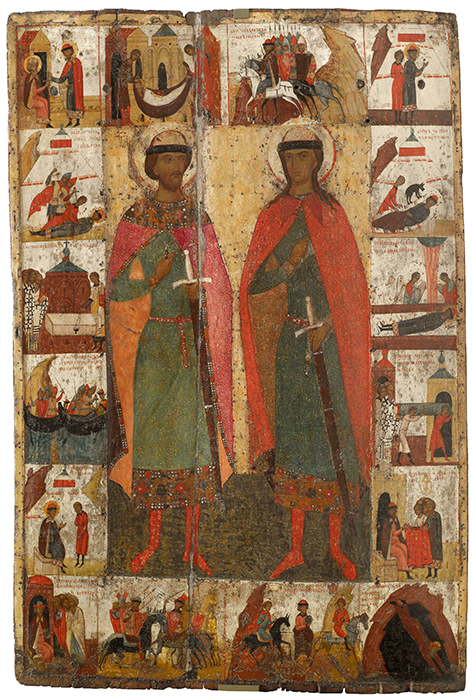
Starting in the 14th century, Russian icon painters began to gradually depart from the Byzantine tradition as a source of stylistic innovations and introduced some unique features into hagiographic iconography.
Since the end of the 15th century, thanks to the development of church art in Russia, hagiographic icons entered their golden age. In the 15th century hagiographical writings about the new Russian saints were significantly supplemented by Epiphanius the Wise, who knew many of them personally. At the same time, Russian hagiographic iconography was enriched with the works and innovative ideas of the famous icon painter Dionisius. The composition of his icons complimented the habitual hagiographical scenes with motifs representing Moscow as the capital of the Orthodox state. Another change introduced by Dionisius was the abandoning of the clear boundaries between the marginal scenes of the upper and the lower row.
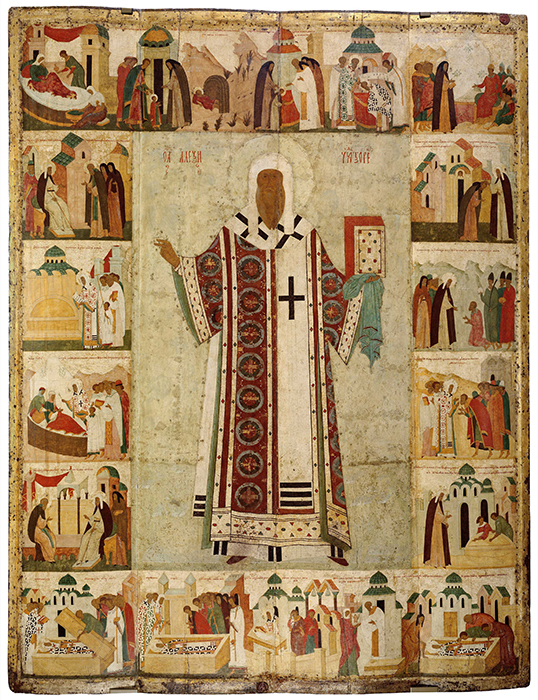
In the 16th century, hagiographic icons have become an integral part of the culture of all Russian lands. The remaining icons convey a desire to depict as much information about a saint as possible, which led, on the one hand, to the development of miniature writing. On the other hand, such highly technical icons looked somewhat overwrought. A striking (and unique) example reflecting this period is the image of St Alexander Svirsky, whose eventful life was set forth in 129 marginal scenes.
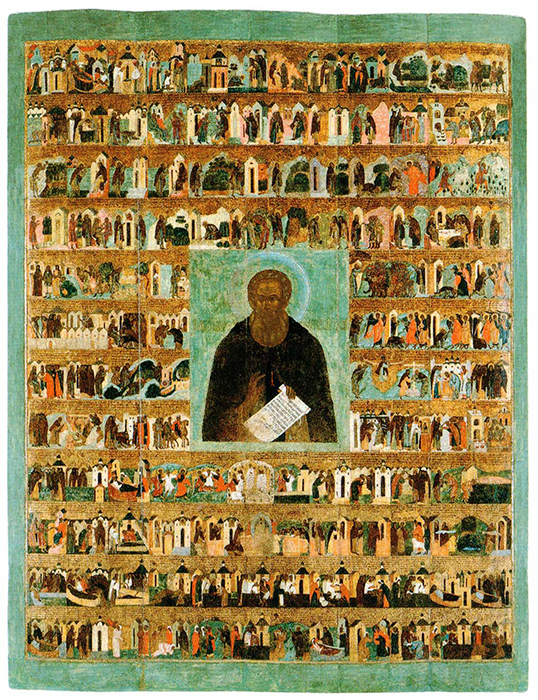
In cases when the existing collections lacked detailed information about a saint, the icon painter resorted to the canon. Traditional stories of a childhood (birth, baptism, education) were introduced into the composition of the marginal scenes, along with the stages of a saint’s ministry, as well as the assumption, the acquisition of his relics and the miracles occurring from them. All this was supplemented by well-known facts from the life of a particular person.
A distinctive feature of a 17th century hagiographical image was its new compositional structure, placing the scenes of a saint’s life not only in the margins of the icon, but also around the central figure of the saint. Such an arrangement of scenes violates the traditional line-by-line principle of reading the icon, making it impossible to trace the chronology of events without knowing the text. Also at the end of the 17th century St Dimitry of Rostov carried out a large-scale work compiling and complementing the existing hagiographical texts.
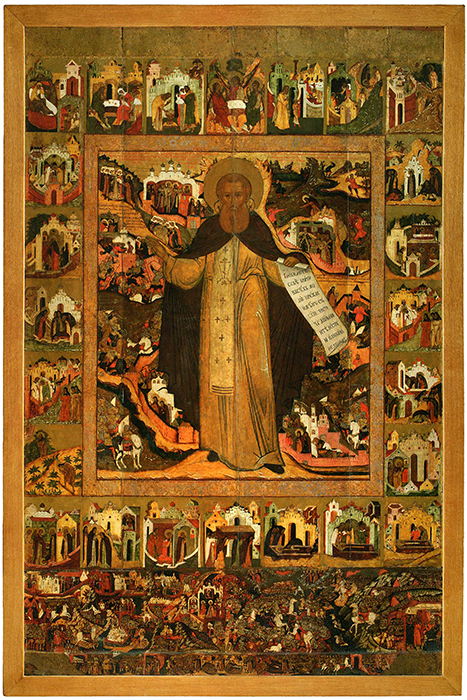
Starting in the 18th century, hagiographic icons began to be painted even more than before. Notably, small images began to prevail among them. In contrast to the large temple icons mentioned above, their smaller descendants were designed for home use. In this way, hagiography icons steadily entered the life of the Russian people. One of their specific features was the tendency to reduce hagiographic scenes to a minimum.
The hagiographic images of the 19-20 centuries show the trend of a further expansion of the subject area, illustrating the lives of lesser-known saints. Typically, such icons were created by individual orders, as patron saint icons. Complete freedom in composition and stylistic design can also also be noted here.
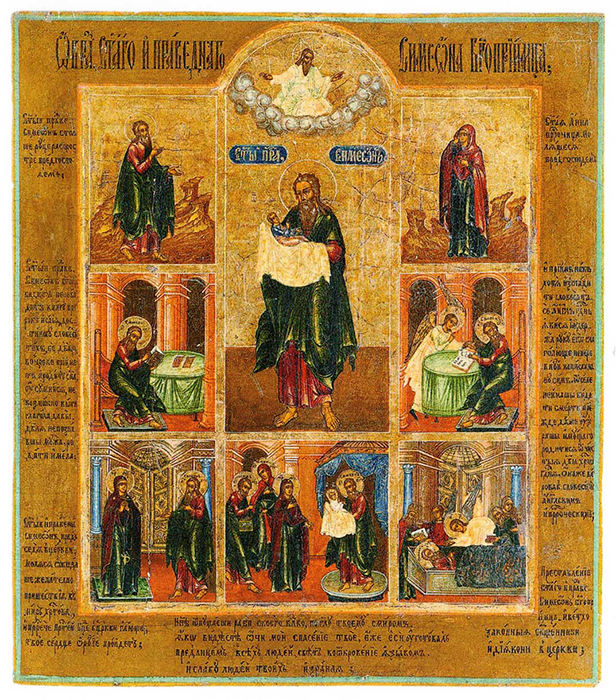
The traditions of illustrating the lives of saints have undergone different changes at different times. However, their overarching goal of enriching the hagiographic iconography with more and more saints has remained unchanged through the centuries. While today’s icon-painters are gradually multiplying this legacy with the hagiographic images of the new martyrs and other “rare” saints, let us not lose faith that we will pass this tradition to our children.
Used sources:
https://www.pravenc.ru/text/182315.html
https://www.icon-art.info/book_contents.php?lng=ru&book_id=146&chap=1#p1

